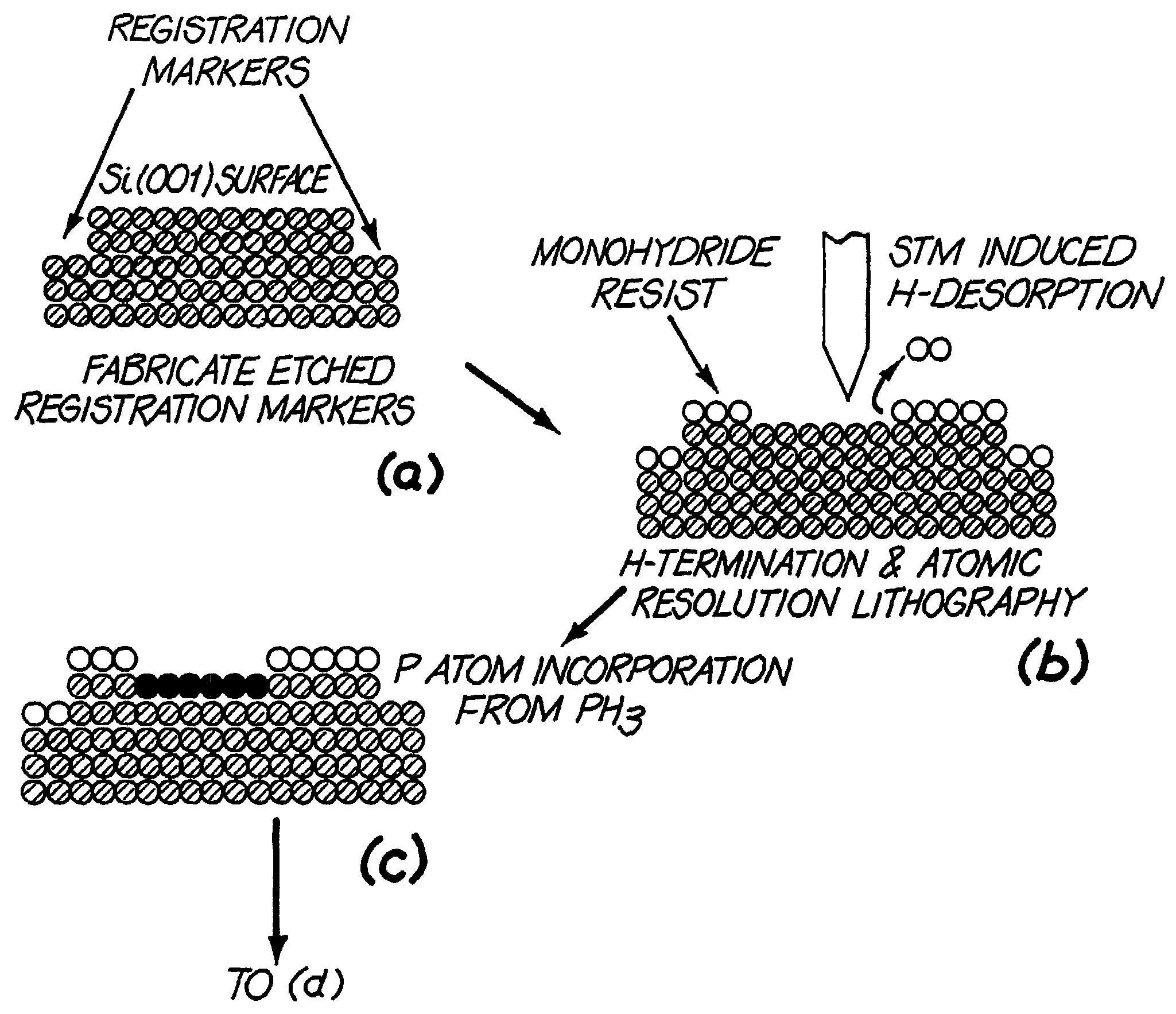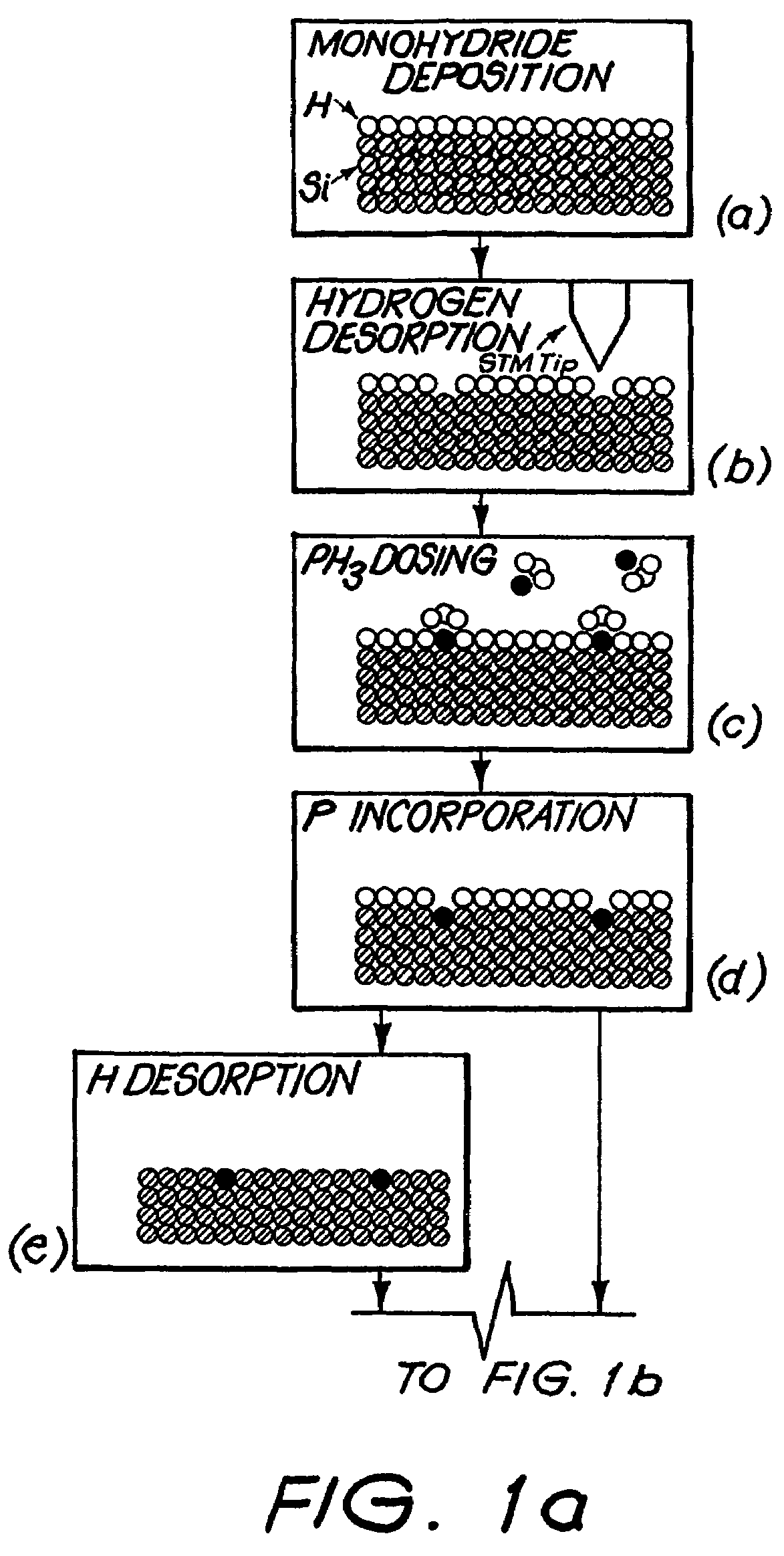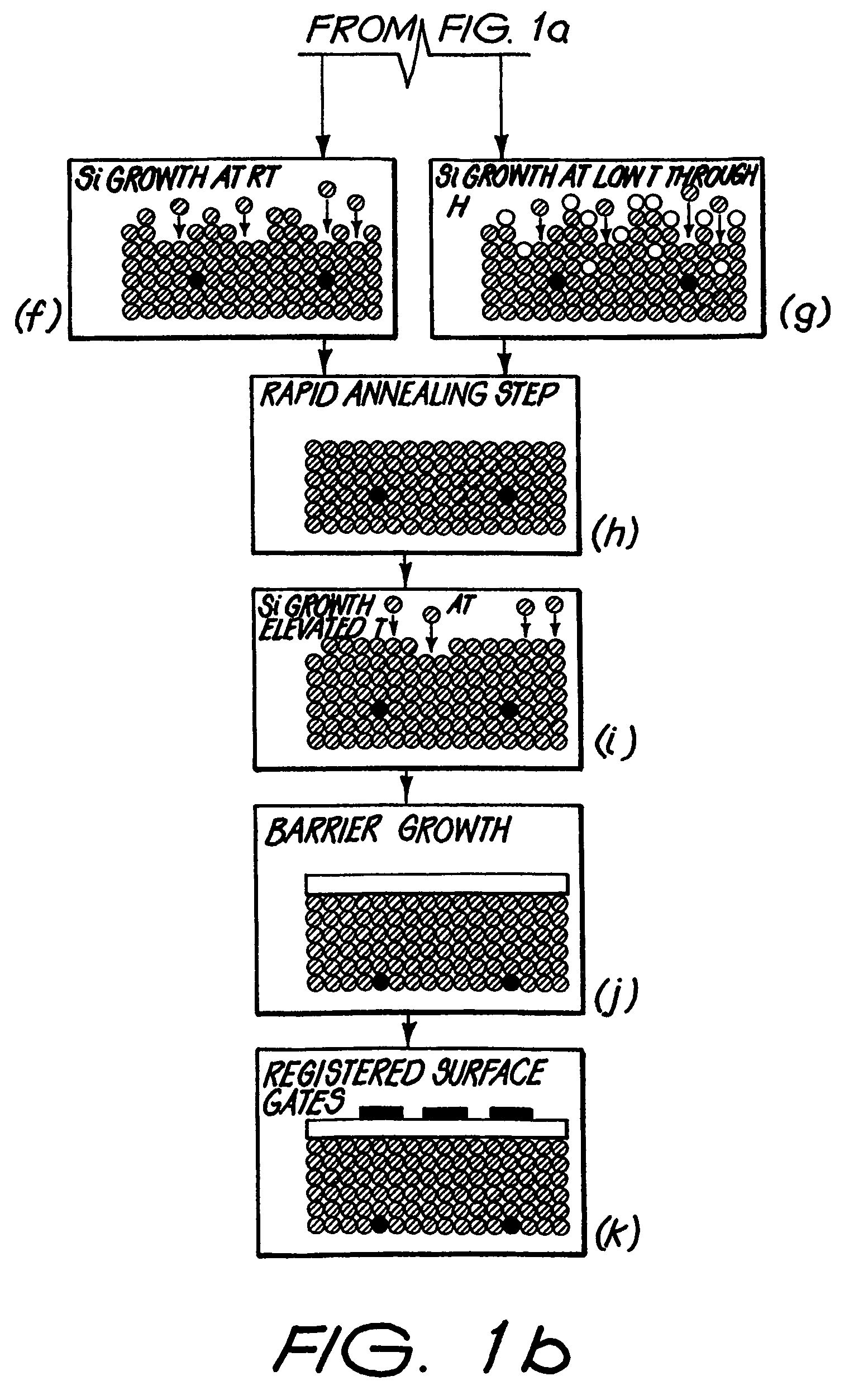Fabricating nanoscale and atomic scale devices
a technology of atomic scale and nano-scale, which is applied in the testing/measurement of individual semiconductor devices, semiconductor/solid-state devices, instruments, etc., to achieve the effect of accurately controlling the position of dopants and robust semiconductor devices
- Summary
- Abstract
- Description
- Claims
- Application Information
AI Technical Summary
Benefits of technology
Problems solved by technology
Method used
Image
Examples
Embodiment Construction
The Fabrication Approach
[0102]Referring first to FIGS. 1A and 1B, an outline of the main processing steps of a fabrication strategy for a quantum computing device will be described.
[0103]A clean Si(100)2×1 surface is formed in an ultra-high-vacuum (UHV) by heating to near the melting point. This surface has a 2×1 unit cell and consists of rows of σ-bonded Si dimers with the remaining dangling bond on each Si atom forming a weak π-bond with the other Si atom of the dimer of which it comprises.
[0104]Exposure of this surface to atomic H can break the weak Si π-bonds, allowing H atoms to bond to the Si dangling bonds. Under controlled conditions a monolayer of H can be formed with one H atom bonded to each Si atom, satisfying the reactive dangling bonds, effectively passivating the surface; see FIG. 1A(a).
[0105]A STM tip or SEM is then used to selectively desorb H atoms from the passivated surface by the application of appropriate voltages and tunnelling currents, forming a pattern in t...
PUM
 Login to View More
Login to View More Abstract
Description
Claims
Application Information
 Login to View More
Login to View More - R&D
- Intellectual Property
- Life Sciences
- Materials
- Tech Scout
- Unparalleled Data Quality
- Higher Quality Content
- 60% Fewer Hallucinations
Browse by: Latest US Patents, China's latest patents, Technical Efficacy Thesaurus, Application Domain, Technology Topic, Popular Technical Reports.
© 2025 PatSnap. All rights reserved.Legal|Privacy policy|Modern Slavery Act Transparency Statement|Sitemap|About US| Contact US: help@patsnap.com



